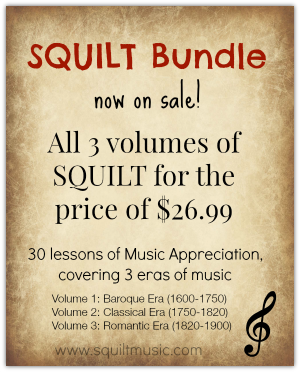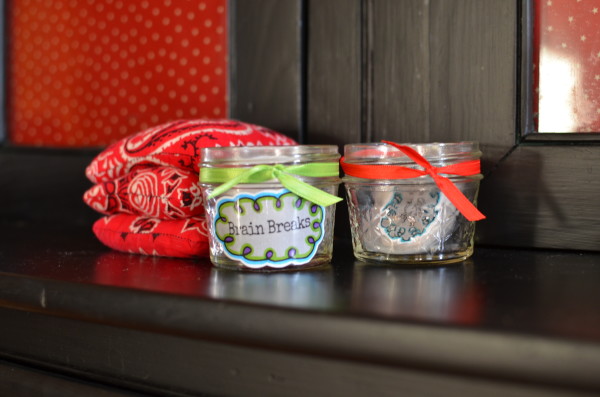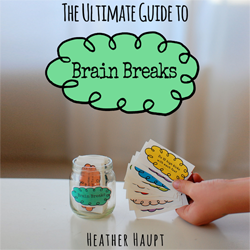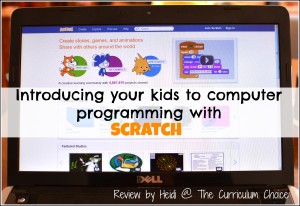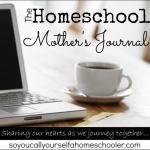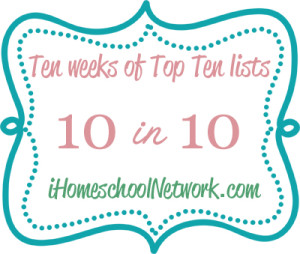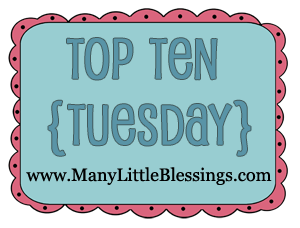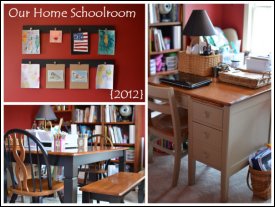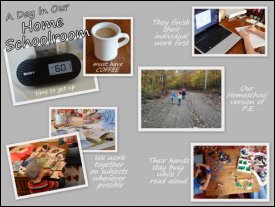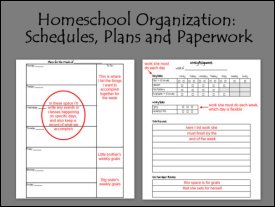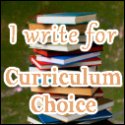 Hi, I'm Heidi and I homeschool my two sweet kids. I want them to know that learning is an exciting lifelong adventure! We love great books, unit studies, notebooking, lapbooking, and hands-on learning.
Hi, I'm Heidi and I homeschool my two sweet kids. I want them to know that learning is an exciting lifelong adventure! We love great books, unit studies, notebooking, lapbooking, and hands-on learning.Easy Music Appreciation…for the Non-Musical Mom
I’ve mentioned the SQUILT music appreciation curriculum several times when talking about our Tea Time resources. I think it’s high time I posted a full review!
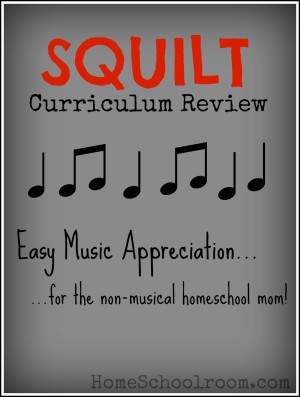
Note: I am an affiliate for this curriculum that was created by a fellow homeschool mom, and the links in this review to the SQUILT website are my affiliate links. Like all my reviews, these are my honest opinions after using the materials in our homeschool.
SQUILT is a music appreciation program created by Mary of Homegrown Learners. The name is an acronym for Super Quiet UnInterrupted Listening Time, a technique Mary used as a school music teacher and then as a homeschool mom. The basic premise is to listen intently and learn about one music selection at a time.
There is so much information in the SQUILT volumes, and you can use as little or as much as you like! Printable charts help you come to know important terms in music: rhythm and instrumentation, dynamics and tempo, and instruments.
I have no background in music education, having been a piano lesson dropout and avoiding any and all music classes thereafter. SQUILT is a terrific tool for a mom like me, who wants to learn about classical music alongside her children. I simply open the lesson and we enjoy it together.
What is involved in a SQUILT lesson?
Each lesson includes the name and composer, a brief background of the piece, at least one link to listen to the piece free online (no CDs to buy!), and often other links to related videos: performances of the piece, etc. You could spend as little as ten minutes on a lesson, listening to the selection of music first in complete silence (preferably with eyes closed), then listening again and filling out the included printable SQUILT record sheets.
During the first time listening I have my children face in opposite directions to minimize temptation for my ham of a son to make crazy faces to elicit big sister’s laughter!
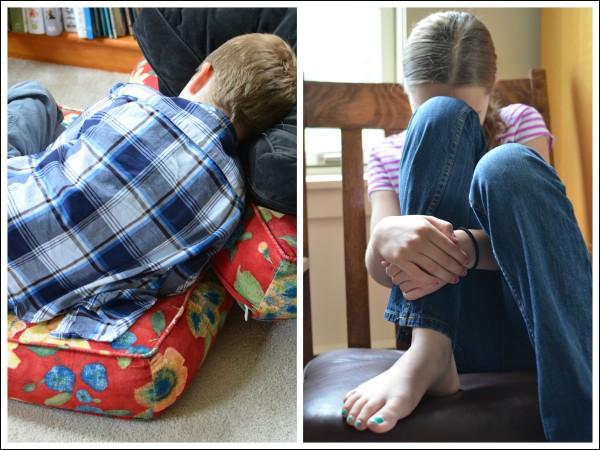
Mary includes two styles of notebook pages to record the lesson if you choose: one for older children with space to write about the details and one for younger children with space for drawing what they hear. This works perfectly in our home, with my pianist daughter filling out the written sheet and my eight-year-old son drawing his reaction on the other sheet. Mary’s notes on the dynamics, rhythm/tempo, instrumentation and mood help this musically-deficient mom have an intelligent conversation with my children about classical music!
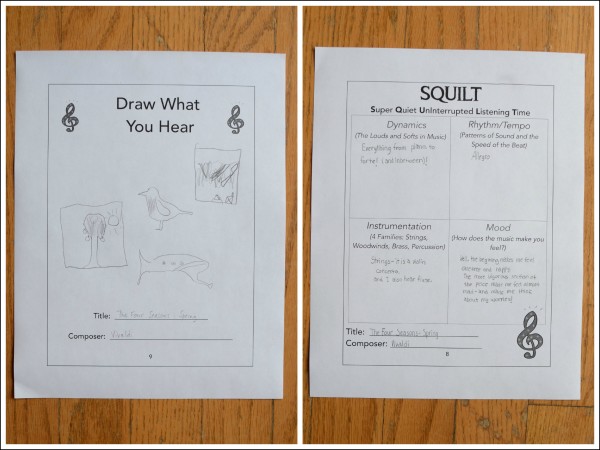
You can really stretch the lesson over a longer period of time, listening to the piece repeatedly and exploring the extra ideas (complete with printable notebooking pages) that Mary puts right at your fingertips. The lessons are filled with information about specific instruments, musical terms, and classical music itself along with links for further reading, listening, and viewing.
The “extras” vary depending on the lesson, but there’s always a treasure trove of ideas for further study and to build your knowledge of classical music. Here are some of the things we’ve enjoyed while using the SQUILT curriculum:
- We learned about “Pachelbel flattery” where more modern music uses parts of Pachelbel’s Canon (Volume 1, Lesson 1), and followed links to hear it in action. My daughter went on the play a variation of Canon in D (arranged by George Winston) for her piano recital.
- There are extra notebooking pages throughout: one for each composer (my daughter likes to research the composers), others on the time period, a certain instrument or style of music, or the background of the music. We used the printable of the poem that accompanies Vivaldi’s Spring as copywork (Volume 1, Lesson 4).
- Learning about Tchaicovsky’s “Love Theme” from the Romeo and Juliet Fantasy Overture (Volume 3, Lesson 9) led us to listen to the whole piece…then read an adaptation of the play…then watch the entire play on YouTube!
- We learned more about the pipe organ while studying Tocatta and Fugue in D Minor by Bach (Vol. 1, Lesson 7). It prompted us to take a closer look at the pipe organ in our church, and we learned so much about something that’s been right in front of us for years and have a greater appreciation for the amazing instrument it is.
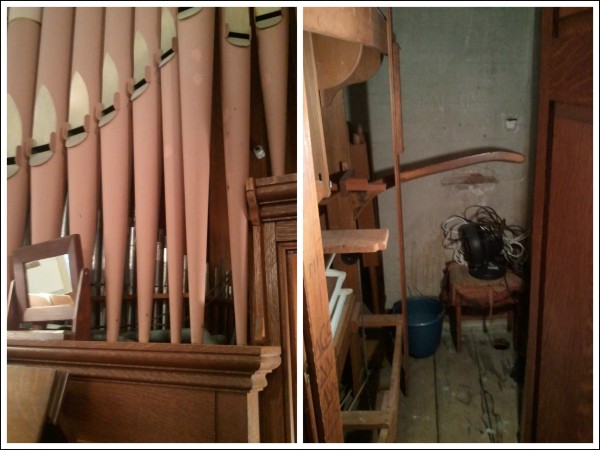
What do I think is so special about SQUILT?
Here’s what I think is truly unique and incredibly beneficial: you build appreciation one piece of music at a time!
As Charlotte Mason style homeschoolers, we strive to learn about famous composers and grow love for their music. I play classical music when it can be an enriching background, but using the SQUILT technique is like picture study (where you focus on one masterpiece until your child can recall it from memory). Listening to a piece of music and really focusing on it builds a relationship with it that merely having music in the background does not.
SQUILT is a helpful technique that you could use and apply to other pieces of music, but the information from Mary’s notes and ideas for extra learning are well worth the money to me! I honestly wouldn’t even know where to begin to choose music to study.
Add Music Appreciation to your Homeschool with SQUILT:
There is great information on the SQUILT curriculum website. You can download sample pages under the “Freebies” tag and see the table of contents for each volume under the “SQUILT Curriculum EBooks” tab.
Right now there are 3 volumes of SQUILT, with 10 lessons per volume. I enjoy how Mary has arranged the lessons by era, so those of us studying history chronologically can use the volume that coincides with our studies. You can buy volumes individually for under $10, or right now snag all three available volumes for $26.99!
Brain Breaks Boost Learning and Build Relationships
I remember early reading lessons with my son. At the beginning of the lesson he was completely capable, but the longer it went on the harder it became for him to focus or remember things he knew. He would slump over onto me, yawn and look around the room, and our lessons would become like a slog through thigh-high snow.
Most days, in task-master mode, I’d force him to buckle down so we could finish, promising him a break as soon as we were done. One day in desperation I told him to get up and do a few jumping jacks and it helped him refocus. After that I used the same tactic occasionally, but my personality usually just focused on getting the lesson DONE. I understood his need to be active but felt we should finish the lesson first, then go take a real “break.”
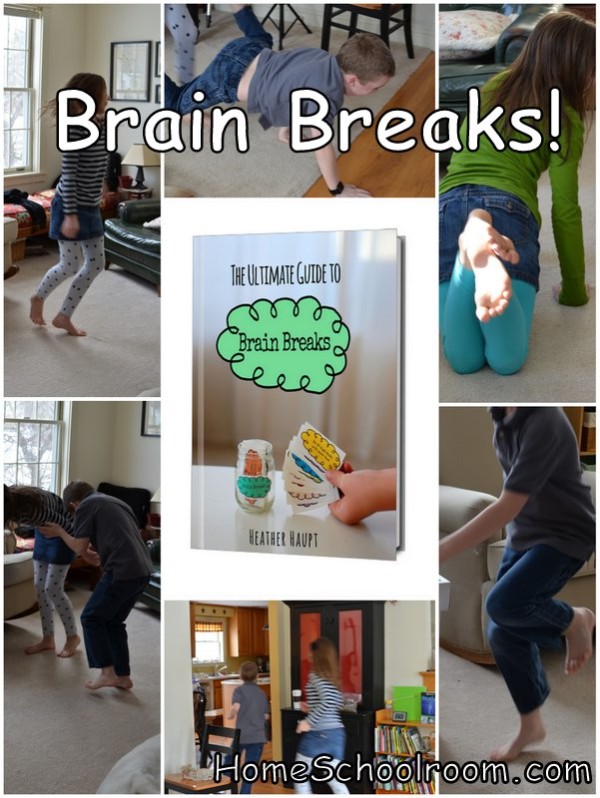
This post contains an affiliate link to a product that we regularly use and love (and need!) in our homeschool.
Enter a Valuable Teaching Tool: Brain Breaks
Then Heather at Cultivated Lives wrote about Brain Breaks, short bursts of controlled movements to be used during intense mental effort. She’s a mom of boys who’s in the trenches with me trying to get these active little guys to focus. Add in that she’s a self-proclaimed science nerd and I jumped at the chance to obtain a free review copy her book, Ultimate Guide to Brain Breaks. I devoured it in an afternoon and with great excitement prepared the printable Brain Break cards for our first week of school this year.
We used Brain Breaks our very first day and countless times over the course of this year. It’s not just my I’d-rather-build-a-robot-than-practice-reading son who benefits, but also my musical daughter who wishes all math curriculum would cease to exist.
There have been so many times over the course of this year that I’ve seen one of my children who is frustrated and even in tears grab a Brain Break card and within a couple minutes be laughing and ready to try again. Not only do they help refocus children who are not working at their best, but they change the whole mood of the moment.
I call for Brain Breaks when I recognize a lack of focus or negative emotions, and often my kids ask for a Brain Break because they can recognize the signs in themselves. Come to think of it, that’s actually a life skill and will help them be more productive even when they are older.
Brain Breaks can Break a Negative Pattern
I’m not exaggerating when I say Brain Breaks have helped us have overall far more pleasant days. Here is an all-too-typical pattern before:
I drag my son, who is flopping like wet spaghetti, through his one-on-one reading lesson. We finally finish and I send him off for a short break. By now I’m feeling a bit edgy. I check in with his sister, who made simple calculation errors in her math lesson because she wasn’t focused on math but was really thinking about the story she’s been writing. I get upset that it isn’t her best work, so soon she’s teary. Pretty soon I join the unhappy club and the mood of the whole house takes a nosedive. In typical type-A fashion I bulldoze through our next task. We check things off but the joy is lost.
These days I call for a Brain Break. I join in with the kids, because when they aren’t focused or working well I can get frustrated, too. A few minutes later we’re back on track, smiling and reconnected, breaking what used to be a vicious cycle for us. Brain Breaks not only help get their more focused work done, but they also build our family relationships in the process!
Do you really need the book to implement the idea of Brain Breaks?
If you’re like me you do!
- First of all Heather details the scientific facts. She shows the wisdom in taking breaks for movement when necessary. I tend to value checking things off my list above all and steamroll over the little people that get in my way. Realizing how much the Brain Breaks boost learning helped me prioritize them over plowing through the lesson. So even if it feels like taking a break is counter-productive I know more learning occurs if I implement them.
- Second of all the printable cards make it easy and provide a variety of ideas. When you need a Brain Break your brain is mush, so that isn’t the time to think of a fun or original way to move! That was one of the problems with my old system of “Hey, jump up and do a few jumping jacks.” It got boring and didn’t re-inject the fun into our learning. Besides providing a variety of ideas to prevent boredom, the movements are specifically chosen to stimulate the brain for learning, from blood-pumping whole body movement to imaginative dramatizations.
How We Use Brain Breaks in Our Home
I keep two small glass jars with the Brain Breaks cards. We grab a card from the “Go” jar (green ribbon) and after it’s used place it in the “Done” jar (red ribbon). That way we cycle through all the cards before repeating. The jars and a few bean bags (helpful for some of the Brain Breaks) sit near an open space in our house, ready to save the day!
This week we’ve been doing our yearly Standardized Testing, and what a difference Brain Breaks have made. During long exams I allow Brain Breaks and they’ve kept us laughing even while filling in bubbles!
Want to Try Brain Breaks in Your Homeschool?
Click on over to grab your copy of Heather’s Ultimate Guide to Brain Breaks today!
Recent Homeschool Reviews
You know I write reviews for The Curriculum Choice, right? I forget to pop in here and update when I have a new review up over there. My most recent review is about one of the hits for our family this year, and I wanted to let you know about it so you can check it out. Have you ever heard of Scratch, a terrific and FREE way to introduce your children to computer programming?
While I’m at it, here are a few others I’ve done this year:
- Snap Circuits is a great tool for hands-on education about electricity
- New to us this year are Latin curricula from Classical Academic Press, and I’ve been extremely pleased with the materials for my eight- and eleven-year-old: Song School Latin and Latin For Children.
- A few great books I’ve used and reviewed this year are The Kids’ Book of Weather Forecasting (education and inspiration for junior meteorologists), The Story of the Orchestra (learn about composers and the instruments of the orchestra) and Storybook Art (art projects inspired by picture books).
By the way, while you’re over at The Curriculum Choice make sure you subscribe! It is one of my favorite blogs to read (and was even before I was one of the contributors). I adore my fellow authors at TCC: sweet women like Trisha of Hodgepodge, Barb of Harmony Fine Arts, and Cindy of Our Journey Westward. Reading their review posts is like sitting down to coffee with an experienced homeschool mom and having her share a favorite product that she uses in her home.
Care to keep up to date on the products we’ve tried and resources we’ve fallen in love with?
- Check out my Reviews and Resources page on the blog, where I keep links to all my reviews published here and on The Curriculum Choice as well as the extra special resources that have helped me in my homeschooling endeavors.
- You can also find those and all my reviews in one place on My Homeschool Reviews Pinterest Board.
An Aerial View of History With Brimwood Press
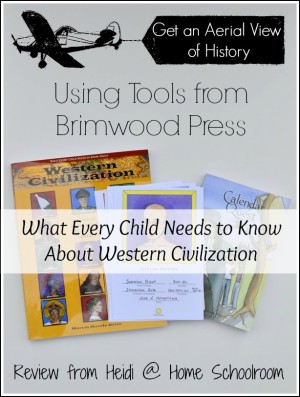
I’ve always had a terrible sense of direction. In fact, I can get lost coming out of a store at the mall. However, I find if I look at a map first to get the aerial view I understand the layout better and can remember where I’ve been and where I’m going.
This summer my children and I got the aerial view of history! We had focused on American history in the last two years and planned to begin Ancient history this fall. With perfect timing Brimwood Press offered me the chance to review What Every Child Needs to Know About Western Civilization.
Disclosure: I was given the curriculum materials from Brimwood Press free for review. This post details my honest opinion after using these materials with my children. I was happy to become an affiliate for Brimwood Press because I feel they produce a quality product for homeschoolers.
A Unique Approach to Studying History
This isn’t your ordinary history curriculum. Most programs are designed to take you through history and give a detailed look at time periods, civilizations, and the famous people of the past. Brimwood has created a product that is designed to do just the opposite: give you a quick overview (they call it a “jet plane ride”) of 5,000 years of history in about a month.
It isn’t just different because of how quickly it moves through history, it also takes the unique perspective of following the developments in our western calendar through the time periods. According to Brimwood Press:
By learning the story of the calendar, children develop a mental scope and sequence of 5,000 years of Western history to which all subsequent learning can be related.”
Why is a quick overview of history important?
I’m a big fan of getting lost in a time period. In fact, we immersed ourselves in pioneer times for a whole school year and loved it! But just like looking at one small section of map makes it hard to understand how to get from one area to another, spending long periods of time on one major period makes it hard to connect how contributions from one time period affect the future and the relationships between civilizations.
I wouldn’t want to spend all our history studies learning at this jet plane speed, but for getting an overview the speed is the key. Understanding the ways history has shaped our own culture actually makes our in-depth history studies feel more relevant.
What Every Child Needs to Know About Western Civilization Prepares Students for Timelines
I’m ready for my children to start compiling a historical timeline of their own (or, for Charlotte Mason homeschoolers, a “Book of Centuries”). This program was a great way to help my kids understand how we’ll be setting up our timeline notebook.
What timelines can do for children is to provide a framework into which they can put pieces of knowledge as they learn them. For this framework purpose, timelines should be very simple–so simple that children can memorize them.” Ruth Beechick in You Can Teach Your Child Successfully
The key historical periods memorized using the Hats of History cards is just that–a simple framework for my children to assist in future learning. Now as we go back and learn about the Sumerians and Egyptians, the Dark Ages and the Renaissance, they understand the overall road map and can see where we’ve been and where we’re going.
What Do You Need For What Every Child Needs to Know About Western Civilization?
Required Materials:
- What Every Child Needs to Know About Western Civilization is the teacher’s guide and student activity book in one. It contains all the historical information and activities, along with perforated cardstock pages for the Hats of History Cards and stickers for the back of the Hats cards.
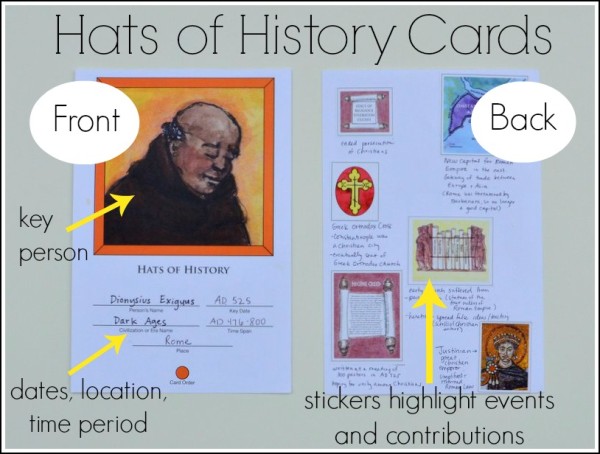
- Calendar Quest is a historical fiction book in which two children reluctantly end up time traveling with Father Time. He’s rather grumpy that people don’t understand the amazing calendar so he takes Lindsie and Evan on a trip through time to see how it developed.
Optional Items:
- Color the Western World is a beautiful large size coloring book with one page for each time period. This would be nice to keep a child’s hands busy while you read and be a good review tool as well. My children don’t enjoy coloring pages, so I merely put this out for them to look at while we worked through the lesson.
What Did I Like Best About Brimwood Press’ WECN?
- The Hats of History Cards were my favorite part of the program. As you go through the lesson you add stickers for major events, people, or contributions from that time period. I wrote small notes beside the stickers so we can use these cards for review. I love the resource they become: 14 cards covering major time periods with a color photo of a key figure, the dates and location, and important details. Before each lesson we made a game by covering the dates so my kids had to put the cards in order from memory.
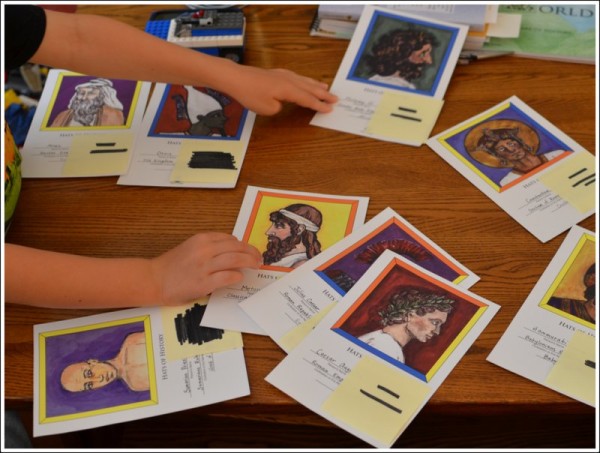
- The program is flexible. It’s meant to be covered in about a month, but you can move a little more slowly. For our relaxed summer schedule it took about two months. (Note: this is not designed to be used at the same time as other history studies. It would defeat the fast-paced design.)
- It works for a range of ages. Though the intended age group is grades 5-8 it’s easy to bring younger children along. My son enjoyed the Calendar Quest story and the hands-on component of the Hats of History cards and stickers.
- It’s a keeper. This entire product is worth keeping on my shelf. The guide is a great reference book for major events and contributions of historical periods. Calendar Quest is a book my children could enjoy in their free reading time. And I foresee going through this program again when my son is in the intended age range. My daughter would then be in high school and I believe would benefit from this quick overview to strengthen her understanding of the flow of history.
Was There Anything I Didn’t Like About WECN?
- I was going to complain that the maps for each lesson are not full page and in order to use them you must photocopy them from the guide which made it difficult to get a good copy of maps near the binding edge of the page. But nevermind, because now Brimwood Press offers the maps in a free download on their website! (Just scroll down the page for the pdf link.)
- This complaint is more of a personal preference, and is something my kids actually enjoyed: many of the historical characters in Calendar Quest are presented as a bit…silly. Cleopatra is more focused on her cat than what’s happening, Charlegmane is obsessed with making fur accessories from Lindsie’s guinea pig, and Pope Gregory just wants his lunch. While it makes for an entertaining read I did reiterate to my kids that I thought many of these people were probably quite serious about the topics at hand. That being said, I still found the book to be filled with historical information and my children were very engaged in the story.
Are You Interested in Learning More?
If you think your history study could use an aerial view, head over to the Brimwood Press website and check it out for yourself. There you can learn more about their products, view sample pages, and get ready for your jet plane ride through history!
2012-2013 End of Year Homeschool Review
Somehow the whole month of June just flew by. It was filled with end-of-school-year celebrations in all our groups and activities…
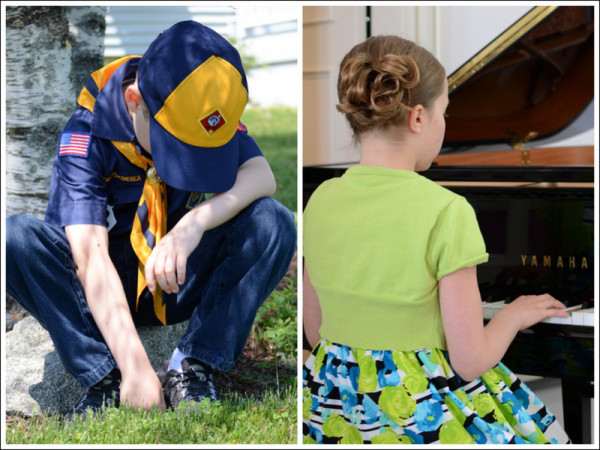
the start of fun summer activities like hiking and camping…
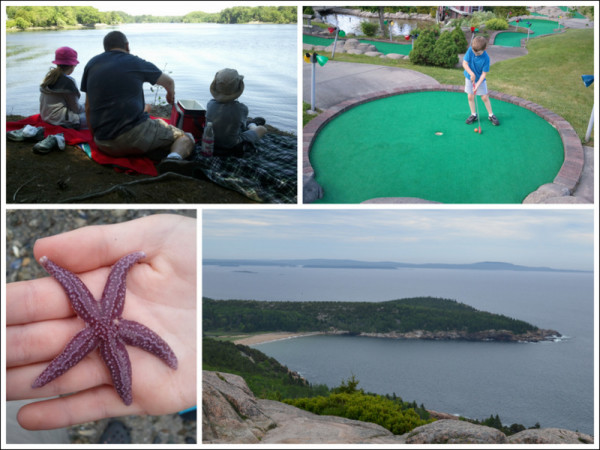
not to mention work like gardening and lawn mowing!
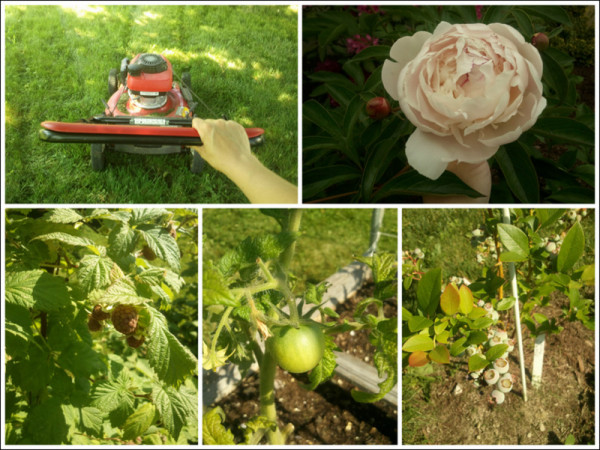
Note to self: Forget about schoolwork for June. Although I allow for a week off and we head out on a camping trip after the drudgery of standardized testing, both last summer and this summer we needed more time before starting our summer school schedule. I did start weekly summer schedules but as far as me sitting down with them working on curriculum or more formal studies, it would be better just to wait for July.
Part of it is because I need to give myself more time to reorganize and ruminate on the successes and failures of the last year. I’ve been thinking so hard my brain hurts, and have so much to say I’ll have to break it up into several posts. So we’ll consider this my first installment: the hits and misses from my 2012-2013 school year plan. In order to be somewhat brief I’ll refrain from going into detail on how I plan to change the things that needed tweaking or didn’t work. You’ll have to stay tuned for my new ideas for next year.
What Worked Well This Year
Core Curriculum
- Writeshop Junior D worked well for my daughter. (You can read my full review of Writeshop on Curriculum Choice.)
- Math: My original plan for my daughter failed early, but our switch to Teaching Textbooks was a hit. For my son lots of playing with math (coin recognition, tally marks, even/odd), working through Life of Fred and an old series of books called “I Love Math” taught basic concepts and we had fun with numbers!
- Funnix helped me teach my son how to read. We finished the last lesson in May and now he’s ready for all the fun beginning reading books at our library. He’s proud of his success and so am I! (Here’s my full review of Funnix on Curriculum Choice.)
- Copywork and Dictation: My ten year old started with copywork from our history curriculum, but towards the end of the year we moved into dictation using selections to address specific areas. I had read about dictation but didn’t fully realize the gold mine of a technique it can be, encompassing skills for writing, grammar, spelling and handwriting.
Extras
- Music lessons: My daughter’s piano lessons are money well spent. They give her a wonderful life skill and have also led to forming a bond with a terrific teacher. (I’m hoping we can find the same experience for my son with guitar.)
- Fine Arts: I added Harmony Fine Arts Grade 1 Overview Year Plans and it made it so easy to accomplish classical music and art appreciation. Secondly, we use the SQUILT technique from Mary of Homegrown Learners to get to know one piece of music at a time. These two resources from fellow homeschool moms help in my weak areas, so the kids and I are learning together.
- Nature Study: Using ideas from Barb at the Handbook of Nature Study blog (and topics that find us) is another highlight of our schoolwork. We did group some of our nature topics into themes and completed detailed studies of trees and birds.
- Unit Studies: Due to my tendency to over-plan and over-complicate, it’s best for me to reserve unit studies for special topics or periods of time. The themed learning sure can be fun, though! This year we enjoyed studies of the U.S. Government and Elections, the Science of Snow, and the Iditarod.
What Didn’t Work This Year
All About Spelling: So many people are huge fans of All About Spelling. I admire the program and can understand all the rave reviews, but it just doesn’t fit us. I still struggled to move through AAS quickly enough to catch up with where my daughter was in her spelling ability. Since it requires 15-20 minutes of one-on-one instruction each day it was too much of a time investment for a single subject that isn’t a struggle for my daughter.
What Needed Some Tweaking This Year
History
I started with a Time Travelers Early 19th Century unit from Homeschool in the Woods, planning to finish by Christmas. Long story short, we got so engrossed we spent the whole year on the 1800s. What worked well was literature-based learning, but two issues put history on the “needs tweaking” list:
- The Time Travelers packs have incredible printables, but those printables required lots of printing and precise cutting and pasting, the beautiful artwork was often too detailed for coloring, and many minibooks had pre-printed text to place inside. In short, they were time-intensive with little room for my kids to make it their own and record what they had learned.
- Not that it isn’t fun to get lost in a time period, but this lasted too long. I think it was due to my aforementioned tendency to over-complicate things, working on those elaborate printables, and choosing time-consuming hands-on projects. In the end our relaxed learning while listening intently to Little House books was what my kids remember.
Science
I still like Real Science Odyssey, but I strayed pretty far from RSO in the second half of the year. I have a science background and my son has an incredible interest in science and asks questions on a daily basis. Contrary to my natural personality, we actually need less structure in science.
Schedules
I love our flexible weekly schedules. What needed tweaking was our outside engagements. By midyear I felt over-scheduled so I cut a couple things out. I have learned to be cautious of signing up for outside activities that place demands on my patience for teaching and planning. Our first year we had a science class where I could sit and chat with other moms while my kids had a great class with a super-excited scientist. Those types of events are better than something I have to help run, which leaves me drained instead of energized.
So that’s the first installment of my review of last year. I still want to share more of my general thoughts as I find myself sharpening my ideas of home education. Do you spend a lot of time reviewing how your year went? Do you get your techniques “figured out” or are you constantly adjusting?
Thank you to the wonderful hostesses with fun wrap-up link-ups. Be sure to join the fun and see what other homeschoolers are up to!
Picture Books That I Just Can’t Part With!
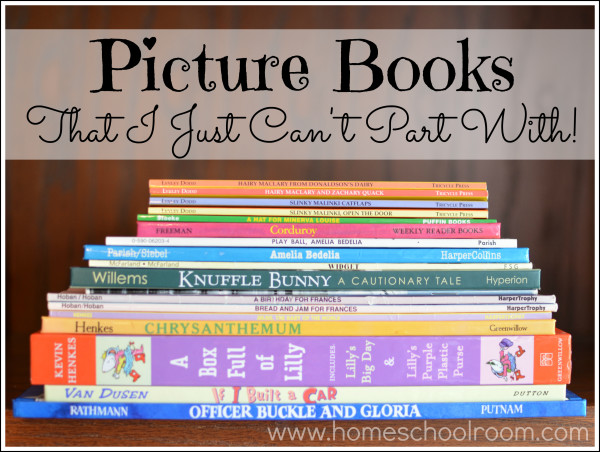
There are the picture books that I just can’t part with, even though both my kids are well past picture book age. Nobody asks me to read the same stories over and over at bedtime anymore, but certain books are here to stay.
Oh, the memories in these books! I stacked all our favorites on the kitchen table. My criteria to begin with was that both my daughter and son had loved the book, and it was enjoyable to read. (You know, not one of those books you hide on the bottom of the stack because you just can’t bear to read it again.)
The kids and I worked together to narrow it down. Choosing our favorite books is a bit like choosing among our friends, but this is a top ten list so I had to make some tough choices. I even cheated, by lumping some series and author favorites together. I just couldn’t help myself!
The book links are Amazon affiliate links. Using those links doesn’t affect your price but helps my bottom line. Thanks!
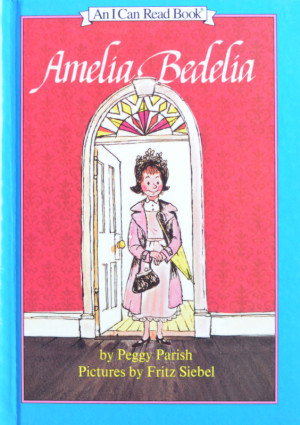
1. Amelia Bedelia by Peggy Parish
I clearly remember choosing Amelia Bedelia books from our school library growing up, and I had such fun sharing this delightful character with my children. We love to notice Amelia-Bedelia-type directions that could confuse someone.
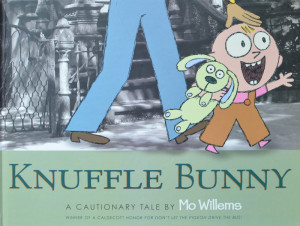
2. Knuffle Bunny: A Cautionary Tale by Mo Willems
There is so much to love about this book! One is the creative illustrating style of black and white photos with cartoon images on top. If your children have a special stuffed animal they’ll enjoy the story of Trixie losing her Knuffle Bunny. Everyone laughs at the page where Trixie goes “boneless” to show her displeasure.
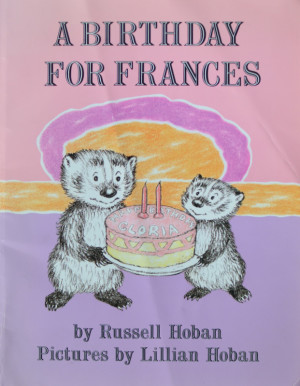
3. Frances books by Russel Hoban
Frances books are another flashback from my childhood. She’s a wonderful character with common childhood woes (jealously over a new baby sister or that baby sister’s birthday, fear of trying new foods) and a penchant for making up silly songs. A Birthday For Frances is one of our favorites because of the song “Happy Chompo to Me.”
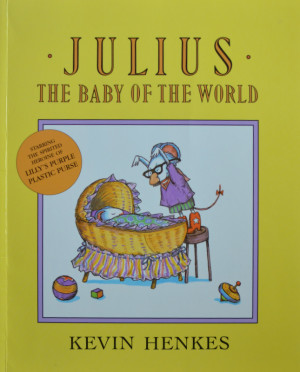
4. Julius The Baby of the World by Kevin Henkes
This book is a must read for children with new siblings. Lilly’s antics after the arrival of her new baby brother are laugh-out-loud funny, and of course there is a happy ending. We adore so many of Kevin Henkes books: Lilly’s Purple Plastic Purse, Lilly’s Big Day, Chrysanthemum, Weekend with Wendell, and Wemberly Worried.
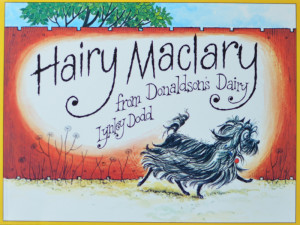
5. Hairy Maclary and Slinky Malinki books by Lynley Dodd
The rhyming text and illustrations in these books by Lynley Dodd are endearing. There are several books featuring the skittish pup Hairy Maclary and black cat Slinky Malinki. Our favorite character appears in most titles: Scarface Claw, the “toughest tom in town.” Prepare to hiss and spit as you read the stories which leads to lots of giggles.
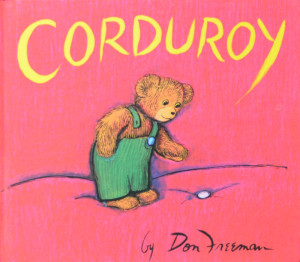
6. Corduroy by Don Freeman
I’m sure this beloved story of a little teddy bear looking for his lost button would make many people’s lists. The happy ending is perfect for sappy book lovers like me. We also love Earl the Squirrel by the same author, an adorable story of a squirrel learning to be independent.
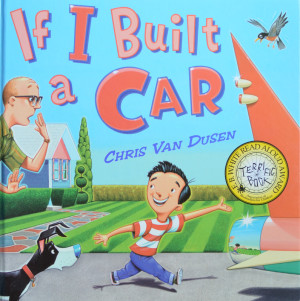
7. If I Built a Car by Chris Van Dusen
Chris Van Dusen is a Maine author and illustrator. This book highlights his wonderful rhyming text and incredible illustrations with a story of one boy’s creative car design. The Mr. Magee series by Chris is also lovely and features silly Mr. Magee and his pup on some pretty wild adventures.
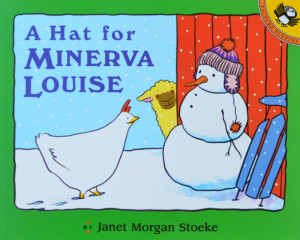
8. Minerva Louise by Janet Morgan Stoeke
If we ever get chickens one of them is sure to be named Minerva Louise. Minerva Louise isn’t happy to stay in the coop like the other chickens and this series contains simple text and pictures that show the zany misunderstandings of this quirky chicken. We’ve enjoyed all the titles: A Hat for Minerva Louise, Minerva Louise and the Red Truck, Minerva Louise on Halloween, and Minerva Louise and the Colorful Eggs.
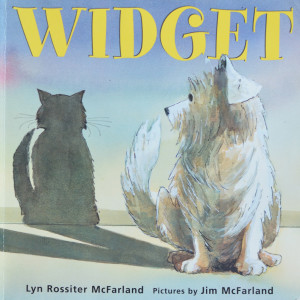
9. Widget by Lyn Rossiter McFarland
Widget is a homeless dog who finds a home in a house full of cats. It’s a great story, especially if you love dogs and cats. You’ll enjoy Widget’s attempts to act like a cat.
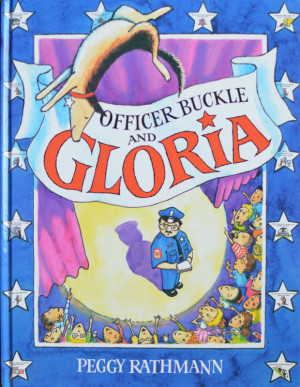
10. Officer Buckle and Gloria by Peggy Rathmann
Another great story for dog lovers, this book is about Officer Buckle, a safety-obsessed officer who gives lectures on safety rules at schools. He gets a new dog, Gloria, and she enlivens his lectures with hilarious behind-his-back antics. When he first finds out that’s why he’s so popular Officer Buckle is pretty upset, but later learns the very important rule “Always Stick With Your Buddy!”
Do you have a collection of books you can’t part with even though your kids have outgrown them? What are some of your favorite picture books?
Hop over to iHomeschool network to see more top ten book lists. Every Tuesday for the next 10 weeks I’ll be participating with the other bloggers of iHN in a blog hop of top ten lists.
This blog hop series was inspired by Angie of Many Little Blessings where you’re welcome to link up, too!
Explore U.S. Geography with Snapshots Across America
Who doesn’t love learning through games? The Snapshots Across America board game is our favorite way of sharpening our U.S. geography skills. You can read my full review of Snapshots Across America at Curriculum Choice.
Funnix Reading Program Review
My primary goal for my Kindergarten son was to learn to read. As a homeschooler who bases much of our curriculum around quality books, I felt strongly that reading skills are paramount and the best thing I could do to equip him to be a life-long learner. I also knew we would need all the help we could get! Like many boys he is wiggly, silly, and more interested in trucks and Legos than letters and sounds.
You can head over to read my review of the Funnix Reading Program at The Curriculum Choice.
Review: All Through The Ages, A Guide to Learning History Through Literature
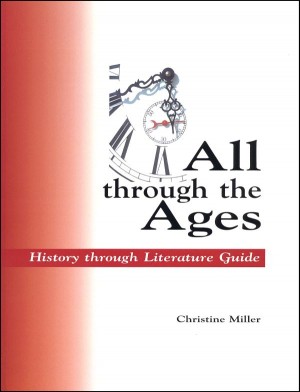
I received a copy of the book All Through The Ages by Christine Miller from Nothing New Press for review. All Through The Ages is a guide to over 7000 books–quality “living books” that can be used for teaching history through literature. I’m wondering if this may possibly be the most glowing review I’ll ever write, because this resource just became my new best friend. I’d sleep with it under my pillow if it wasn’t so thick.
I’ll preface this review by saying that I’m becoming a bit of a history nut now that I’m a homeschooler. I barely remember anything from my history classes in school, except complaining that I couldn’t remember dates and names very well. Fast forward 15 years and for our first summer homeschooling I chose a unit study on the Revolutionary War from Homeschool Share. I found myself fascinated as we read books together. History was a great story! From then on I was hooked on learning history through good literature (with me learning right along with my children), then following up with narration (through notebooking or minibooks) and hands-on activities to cement those fascinating stories.
What is it?
All Through The Ages was written to fill a need that the author recognized: a one-stop resource for teaching history through literature. It contains books from over 20 respected sources: companies such as Beautiful Feet and Sonlight, books such as Honey for a Child’s Heart, award lists such as Newbery & Pulitzer (visit the website for a list of sources). Before finding this book I would check several book lists when planning our history studies, trying to sort out which books would be appropriate for my children’s ages for both reading aloud and as independent reading. I felt disorganized and had a hard time keeping track of which lists I had checked, and realized I would have to repeat the process when we studied these time periods again.
Right now we are studying the early 1800’s using a Time Traveler’s unit from Homeschool in the Woods. I love the written work and activities but wanted more than the lesson text for reading aloud. I was immediately able to try out All Through The Ages. I read the introduction, which is a great overview of the book and how it’s arranged, the author’s thoughts on studying history chronologically and using “living” books, and several examples of sequences for study. After that I went right to the time period we are studying.
What works for us:
In one place were recommended books on all the topics we’ll be studying! It’s not just the titles and author, but also a short note for each: the specific event or dates, for biographies a quick reminder of what that person did, and extra information like that the book is beautifully illustrated or contains authentic journal excerpts. The books are also divided into age groups (Grades 1-3, 4-6, 7-9, 10-12) and types (Resources for all Ages, Overview of the Era, Specific Events, Biography, Historical Fiction, Literature, Culture).
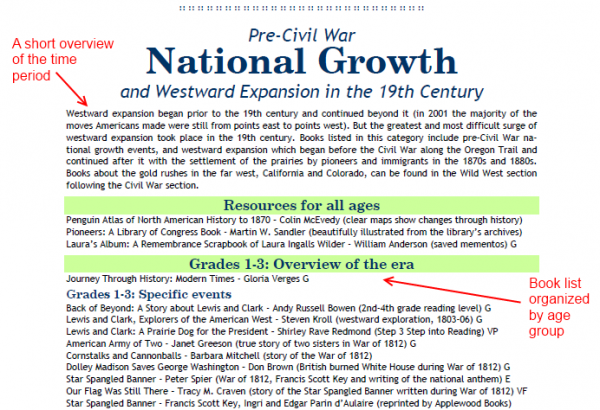
The book lists alone would make this a recommended resource, but I’m not done listing the wonders of this book yet. There is also a short write-up at the beginning of each section and a timeline of the era at the end–helpful for reminders and ideas of events to cover. In addition to sections on historical eras from Creation to modern times, there are sections covering the history of geographical regions, and also the history of science and math, visual arts and music. I can only imagine how often I’ll be using this book!
What doesn’t work for us:
For our homeschool this is an incredibly helpful resource without a single drawback. I do want to note that this is a Christian, Creation-based history resource. The author summarizes it this way:
I have chosen to use biblical chronology and the historical records of the ancient world, rather than, as most modern history references do, dates harmonized with current evolutionary theory.
Books from Answers in Genesis are included, and the ancient history timelines were aligned with James Ussher’s The Annals of the World (originally published in 1658).
The bottom line:
If you use a living books approach to studying history this is an invaluable reference book. It is well-organized, easy to use, and saves time. We love hands-on activities, lapbooking and notebooking so we use other resources as well, but with this book and a library card you could have a complete history program for a student’s entire homeschool career.
Check it out for yourself:
Nothing New Press has sample pages and the table of contents for you to view on their website, and you can purchase the book in print or as an ebook directly from them. The print book is also available from Rainbow Resources.
Review: R.E.A.L. Science Odyssey Life Level One
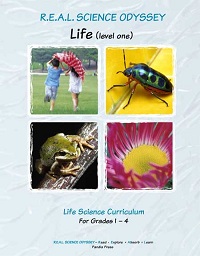
Though not everyone views a formal science curriculum as necessary for children in early elementary years, I have a six year old son who loves all things science. We already did a lot of reading science books and watching scientific shows, but I wanted to spend more time on science in our homeschool and be sure I was covering basic building blocks of science knowledge for both him and his 10-year-old sister. I was excited to receive a copy of R.E.A.L. Science Odyssey Life Level One curriculum from Pandia Press to review. I had seen this curriculum online and was interested in seeing if it would be a good fit for our family.
What is it?
R.E.A.L. Science Odyssey is a science curriculum from Pandia Press. R.E.A.L. stands for read, explore, absorb, and learn. Life Level One is a full year of life science designed for grades 1-4. Each unit consists of a read-aloud lesson page followed over the course of the week (or longer, if needed) by hands on activities and labs that reinforce that lesson. There are student pages for your children to record what they’ve observed and the results of lab activities.
What works for us:
- The text for the lesson is not like a dry textbook, but more like a fun conversation with your cool scientist neighbor. The lesson page is informative but short and interesting enough to hold even my six-year-old’s attention.
- As a fan of Charlotte Mason and lover of good books I really appreciate the list of additional reading suggestions. It is especially handy because it marks which books are highly recommended versus just “more fun than science.” I attempt to request most of these from our library and feel it is a good supplement to the lesson text pages in the curriculum.
- The best part of this curriculum, and the reason it’s a great fit for our family, are the hands-on activities. Very little time is spent with me just talking to my kids about science, much more time is spent showing and doing and trying. As a line in the curriculum’s introduction states: “If you hate to touch “bugs,” wouldn’t think about letting your child handle worms and have no intention of getting gooey and dirty, RUN NOW!” You’ll be asked to bring critters into your home, build models, act out life cycles, and test different functions of your body. Many of the activities are easy to implement and may seem simple, but doing things really cements knowledge for my children.
What doesn’t work for us:
- We don’t usually use worksheets, so some of the printed pages intended for the student to fill out don’t work well for us. I skip the pages that include coloring or labeling the parts of a existing drawing, or simply have fill-in-the-blank questions. Drawing encourages my children to look carefully and pay attention to details. Many pages do have the child make a drawing of an observation and I use those, or if I skipped the included worksheet I simply give my children a blank piece of paper. If I had to estimate I would say I’m able to use roughly 80% of the student pages. Having the building blocks of science covered and hands-on learning activities planned out for me far outweighs not liking some of the printables.
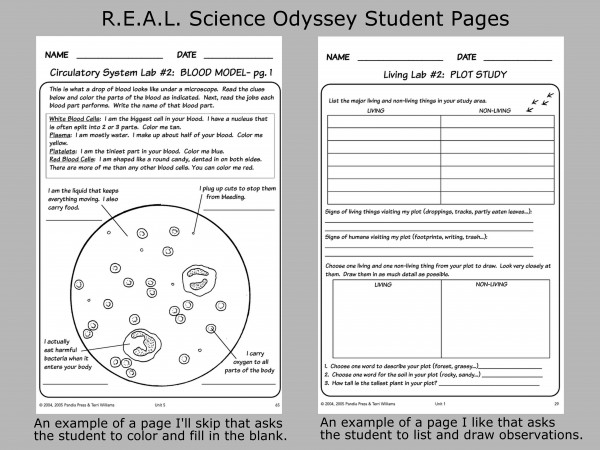
- There are hand-drawn illustrations, but no real photos. In many instances you’ll be going outside to look for worms or a flower instead of needing a picture, but there are many items we don’t have easy access to. Internet searches or additional books will fill in the gap.
- I had to rearrange the order of the lessons. If we had done them in order we would have labs requiring worms, butterflies or other creatures from outside when in Maine the outside is buried in snow. I was nervous about this since the introduction discussed how the curriculum was meant to be used from start to finish with concepts building on one another, but I found it fairly simple to rearrange. The units are laid out this way: an introduction to the basis of life, then a study of the human body, followed by a study of the animal kingdom and then the plant kingdom. We did the introduction and moved into the animal kingdom (the last phylum covered is mammals), then we’ll spend much of the winter on the human body, and finish up with the plant kingdom in the spring when we can actually find signs of life outside.
The bottom line:
If you’re looking for an elementary level science curriculum that involves a lot of hands-on learning R.E.A.L. Science Odyssey may work for you. My kids are learning a lot and enjoy the activities. It’s simple to implement with easy-to-understand text and clear instructions for all labs and activities. Suggestions for supplemental books and websites are already included. This is a secular science curriculum, but other than a list of books covering evolution in the additional reading suggestions I didn’t find topics in this curriculum that would cause problems for Christian homeschoolers.
Check it out for yourself!
Pandia Press shows several preview pages for RSO Life Level One on their website, and there is also a larger preview to download. You can purchase the ebook directly from Pandia Press, or they have a list of retailers that sell the print version. I received the ebook and found it quite easy to use, with the added benefit of being able to print a copy of the student pages for each of my children.
